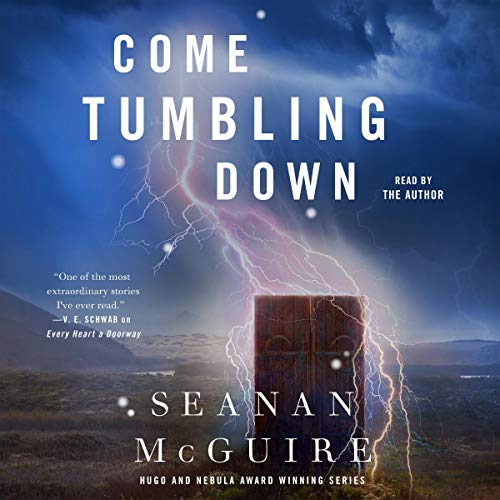 Come Tumbling Down (Wayward Children, #5) by Seanan McGuire
Come Tumbling Down (Wayward Children, #5) by Seanan McGuire Narrator: Seanan McGuire
Format: audiobook, ebook
Source: purchased from Amazon, purchased from Audible
Formats available: hardcover, ebook, audiobook
Genres: fantasy, portal fantasy, urban fantasy, young adult
Series: Wayward Children #5
Pages: 189
Length: 3 hours and 52 minutes
Published by Macmillan Audio, Tordotcom on January 7, 2020
Purchasing Info: Author's Website, Publisher's Website, Amazon, Barnes & Noble, Kobo, Bookshop.org, Better World Books
Goodreads
When Jack left Eleanor West's School for Wayward Children she was carrying the body of her deliciously deranged sister—whom she had recently murdered in a fit of righteous justice—back to their home on the Moors.
But death in their adopted world isn't always as permanent as it is here, and when Jack is herself carried back into the school, it becomes clear that something has happened to her. Something terrible. Something of which only the maddest of scientists could conceive. Something only her friends are equipped to help her overcome.
Eleanor West's "No Quests" rule is about to be broken.
Again.
My Review:
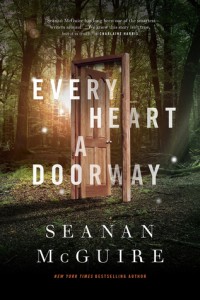 I’ve been winding my way through Seanan McGuire’s Wayward Children series for nearly three years now, since I first read Every Heart a Doorway back in early 2021. I’ve skipped around through the series and had both a grand and a thoughtful time each and every time I’ve returned to Eleanor West’s Home for Wayward Children.
I’ve been winding my way through Seanan McGuire’s Wayward Children series for nearly three years now, since I first read Every Heart a Doorway back in early 2021. I’ve skipped around through the series and had both a grand and a thoughtful time each and every time I’ve returned to Eleanor West’s Home for Wayward Children.
Clearly, you don’t have to read the series in order to get into it. Although it probably does help to read that first book, Every Heart a Doorway, first. And possibly, in this particular case, Down Among the Sticks and Bones before this one. But now I’m caught up with the whole thing, even though this particular book happens very much in the middle of the series.
All of that is to say that some of this review is bound to reflect my thoughts on the series as a whole because it’s just now whole for me, as well as this entry in the series in particular.
You have been warned.
Much as Jacqueline Wolcott warns her friends at Eleanor West’s Home for Wayward Children just before they follow her through the lightning-keyed door back to her home, the horror-movie hellscape called ‘The Moors’.
A place where EVERYTHING is ruled by science and powered by lightning, where vampires contend with mad scientists and resurrection is as commonplace as blood, where Frankenstein’s monster would be seen as just another citizen – and quite possibly was.
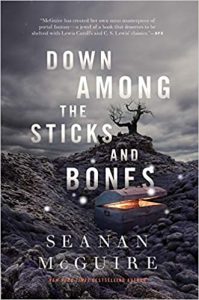 Jack is in dire straits when she returns to the school, and she needs the help of the only friends she can trust to see that, in spite of appearances, she’s still Jack even though she’s in her twin sister Jill’s body. They are the only people who know her well enough to understand that her OCD will not allow her to just adapt to living her life in the unclean thing that murdered her mentor – even if Jill’s full, entire, complete and utterly nefarious plot is to destroy both her sister Jack and the balance that keeps The Moors relatively safe and functional for the human population that was born to a world where vampires contend with mad scientists and drowned gods prey upon ships and shorelines, where the sun only rises behind thick clouds and lightning storms happen whenever the Moon wills it so.
Jack is in dire straits when she returns to the school, and she needs the help of the only friends she can trust to see that, in spite of appearances, she’s still Jack even though she’s in her twin sister Jill’s body. They are the only people who know her well enough to understand that her OCD will not allow her to just adapt to living her life in the unclean thing that murdered her mentor – even if Jill’s full, entire, complete and utterly nefarious plot is to destroy both her sister Jack and the balance that keeps The Moors relatively safe and functional for the human population that was born to a world where vampires contend with mad scientists and drowned gods prey upon ships and shorelines, where the sun only rises behind thick clouds and lightning storms happen whenever the Moon wills it so.
Jack needs help, so she’s gone to the one place where she knows she can get it. Even if it’s the one place she hoped never to return to, because it means that she’ll have to do the one thing she hoped she’d never have to do.
She’ll have to kill her twin sister. Again. She already did it once to save the world she was born to. She’ll have to do it again so that she can save the world that her heart calls home.
 Escape Rating A-: The Wayward Children series winds itself around and around and back and forth and over and under and all over again. We first met the Wolcott twins in the very first book in the series, Every Heart a Doorway, but we don’t get their full story until the second book, Down Among the Sticks and Bones, while book three, Beneath the Sugar Sky, deals with the effects of their actions in Every Heart a Doorway.
Escape Rating A-: The Wayward Children series winds itself around and around and back and forth and over and under and all over again. We first met the Wolcott twins in the very first book in the series, Every Heart a Doorway, but we don’t get their full story until the second book, Down Among the Sticks and Bones, while book three, Beneath the Sugar Sky, deals with the effects of their actions in Every Heart a Doorway.
(After listening to the latest book in this series, Mislaid in Parts Half-Known, and liking it very much, I decided to grab this middle book in audio as well – although the readers are very different. The author herself narrates this story, as she did the previous books that featured the Wolcott sisters. McGuire has a formal, somewhat dry, no-nonsense delivery that is utterly fitting for the formal, somewhat dry, no-nonsense Jack Wolcott. Audiobooks just work better when the narrator fits the primary character’s voice and the author/narrator fit Jack to a ‘T’, even when Jack felt like she wasn’t fitting her own self very well at all.)
Come Tumbling Down is still dealing with the effects of Jill’s actions. Which have been the kind of actions that make her behavior and her very nature in this book make all that much more sense. As much as anything that happens in any of the worlds that the doors lead to make sense from the perspective of this world.
From the perspective of their own worlds, they are completely logical. Unless of course they are nonsense worlds to begin with.
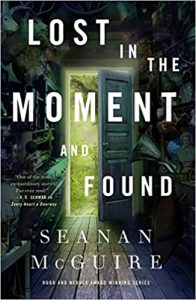 One of the core tenets of the whole, entire, Wayward Children series, something that is said by one character or another over the course of the series, is that “actions have consequences”. This particular entry in the series is the story of the consequences of Jill’s actions in The Moors, which were the consequences of Jill’s actions in our world and Jack’s response to those actions, which were, in their turn, a consequence of both of their reactions when they found their door to The Moors. All of which were the consequences of their parents’ treatment and conditioning of them when they were still under their parents’ thumbs and had never gone through a doorway at all.
One of the core tenets of the whole, entire, Wayward Children series, something that is said by one character or another over the course of the series, is that “actions have consequences”. This particular entry in the series is the story of the consequences of Jill’s actions in The Moors, which were the consequences of Jill’s actions in our world and Jack’s response to those actions, which were, in their turn, a consequence of both of their reactions when they found their door to The Moors. All of which were the consequences of their parents’ treatment and conditioning of them when they were still under their parents’ thumbs and had never gone through a doorway at all.
But that’s EXACTLY the kind of cause and effect that underpins this whole series. Which feels like it is set as a counterpoint to Narnia, where the Pevensie children went through the back of a wardrobe and lived an entire life to adulthood without their actions seeming to have had any consequences at all when they returned to the world they were born to.
As a result of their trips through the doors, the children return ill-adapted to the world where they were born. But that’s in the story. In reality – for certain select definitions of the word – what they exhibit upon their returns are psychological disorders that people are all too frequently misdiagnosed or not diagnosed as having for reasons that have more to do with either parental or medical or societal assumptions and/or expectations than they do with what the people coping or not coping are coping or not coping with.
Which is a long way around to say that there’s more to this series than initially meets either the eye or the reader’s mind. Now that I’ve finished the whole thing – at least so far – the whole thing gets deeper and more meaningful the further you get into it, no matter the order that you get into it in.
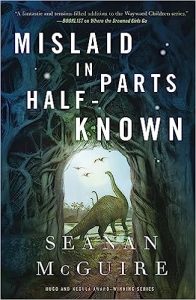 So, on the surface there’s a story about vampires and mad scientists set in a place that the great horror movies might have used for their inspiration – if not their actual setting. Underneath that there’s a deeper story about balances of power and how devastating it can be when those balances become unbalanced. And the story of one heroine who is willing to throw her own body into the breach – along with her sister’s corpse – to preserve that balance at truly any and every cost.
So, on the surface there’s a story about vampires and mad scientists set in a place that the great horror movies might have used for their inspiration – if not their actual setting. Underneath that there’s a deeper story about balances of power and how devastating it can be when those balances become unbalanced. And the story of one heroine who is willing to throw her own body into the breach – along with her sister’s corpse – to preserve that balance at truly any and every cost.
At its heart – beating with the power of unbridled electricity – there’s a love story about a young woman who fell so much in love with a monster and the world that created her that she was willing to do anything at all to preserve that happy ever after – even to become a monster herself.
But the soul of the series, in each and every story, is that ‘actions have consequences’ for good and for ill, and that the most important thing, to do and to be, is to ‘Be Sure’ that your choices are the ones that you can live with – or die by.

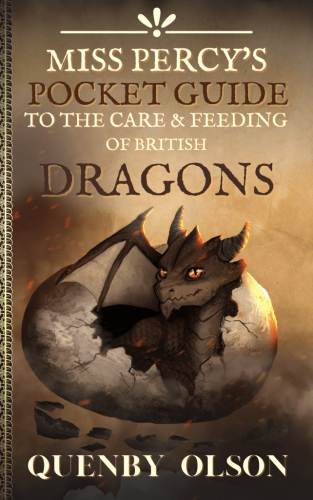 Miss Percy's Pocket Guide to the Care and Feeding of British Dragons (Miss Percy Guide, #1) by
Miss Percy's Pocket Guide to the Care and Feeding of British Dragons (Miss Percy Guide, #1) by  Escape Rating A-: I picked this up because I saw it on a list of cozy fantasies, and it seemed like the perfect book for a chilly winter weekend. And it was calling my name rather loudly, with occasional puffs of smoke for emphasis.
Escape Rating A-: I picked this up because I saw it on a list of cozy fantasies, and it seemed like the perfect book for a chilly winter weekend. And it was calling my name rather loudly, with occasional puffs of smoke for emphasis.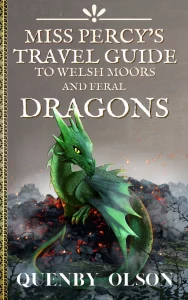 I got so deeply into the story that it took me halfway through before the dragon’s name dropped the clue-by-four on my head – just as the villains attempted to throw the creature from a second-story window. (The dragon has wings, so things did not go AT ALL according to their dastardly plan.) They named the dragon Fitz, after, of course, Fitzwilliam Darcy. Making the ‘pocket’ description of Miss Percy’s Pocket Guide to the Care & Feeding of British Dragons – you guessed it and I’m chagrined at how long it took me to – Pride and Prejudice and Dragons!
I got so deeply into the story that it took me halfway through before the dragon’s name dropped the clue-by-four on my head – just as the villains attempted to throw the creature from a second-story window. (The dragon has wings, so things did not go AT ALL according to their dastardly plan.) They named the dragon Fitz, after, of course, Fitzwilliam Darcy. Making the ‘pocket’ description of Miss Percy’s Pocket Guide to the Care & Feeding of British Dragons – you guessed it and I’m chagrined at how long it took me to – Pride and Prejudice and Dragons!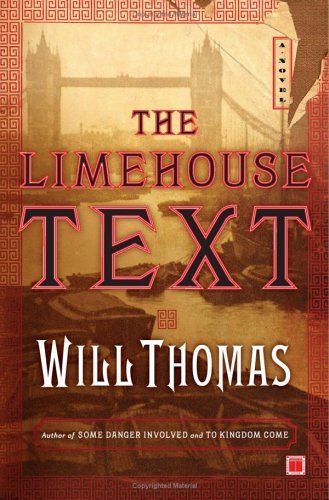 The Limehouse Text (Barker & Llewelyn, #3) by
The Limehouse Text (Barker & Llewelyn, #3) by 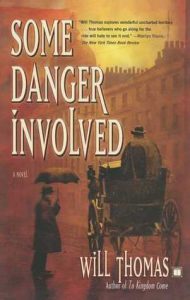 I was feeling in a bit of a murder-y mood this week – reading-wise at least. Which seems entirely fitting as we’re ‘killing’ 2023 this weekend and ringing in 2024.
I was feeling in a bit of a murder-y mood this week – reading-wise at least. Which seems entirely fitting as we’re ‘killing’ 2023 this weekend and ringing in 2024. 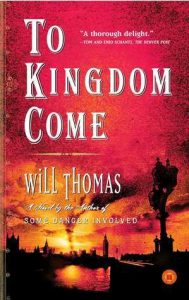 Escape Rating A+: One thing drove me utterly bananas during my reading of The Limehouse Text. I had the vague impression, not that I’d read this before, but that the Jeremy Brett Sherlock Holmes series had also tackled a story set in Limehouse – London’s Victorian version of Chinatown – but couldn’t track down precisely which story. I think it may have been
Escape Rating A+: One thing drove me utterly bananas during my reading of The Limehouse Text. I had the vague impression, not that I’d read this before, but that the Jeremy Brett Sherlock Holmes series had also tackled a story set in Limehouse – London’s Victorian version of Chinatown – but couldn’t track down precisely which story. I think it may have been 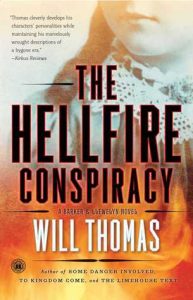 In the end, this is a clever, convoluted mystery, solved but not truly resolved by fascinating characters, steeped in a culture and a perspective that was not treated with any kind of respect in its time and about which stereotypes promoted during this period still linger. The reader is inexorably drawn in by the mystery and the setting, and left with both the satisfaction of at least some just desserts being served – as a mystery should – while still reeling from the marvelously presented microcosm of all the reasons why ‘colonialism’ is such a disgustingly dirty word in so many places around the globe to this very day.
In the end, this is a clever, convoluted mystery, solved but not truly resolved by fascinating characters, steeped in a culture and a perspective that was not treated with any kind of respect in its time and about which stereotypes promoted during this period still linger. The reader is inexorably drawn in by the mystery and the setting, and left with both the satisfaction of at least some just desserts being served – as a mystery should – while still reeling from the marvelously presented microcosm of all the reasons why ‘colonialism’ is such a disgustingly dirty word in so many places around the globe to this very day.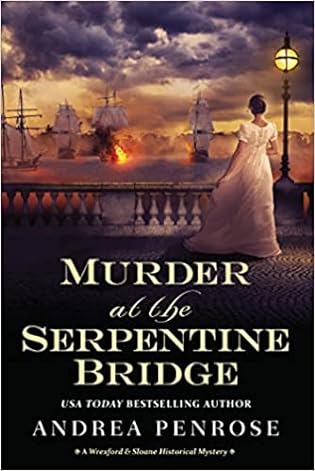 Murder at the Serpentine Bridge (Wrexford & Sloane, #6) by
Murder at the Serpentine Bridge (Wrexford & Sloane, #6) by  As the previous book in this series,
As the previous book in this series, 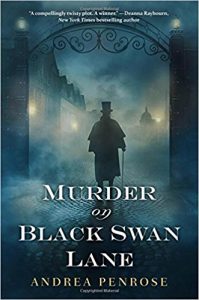 Escape Rating A: This was the right book at the right time, and I clearly waited enough time after
Escape Rating A: This was the right book at the right time, and I clearly waited enough time after  Meanwhile, everyone is chasing everyone else’s tails into danger, as the government’s intelligence services are unwilling to let the right hand know what the left hand is doing (shades of yesterday’s book) and everyone is unwittingly keeping vital clues from even their nearest and dearest.
Meanwhile, everyone is chasing everyone else’s tails into danger, as the government’s intelligence services are unwilling to let the right hand know what the left hand is doing (shades of yesterday’s book) and everyone is unwittingly keeping vital clues from even their nearest and dearest.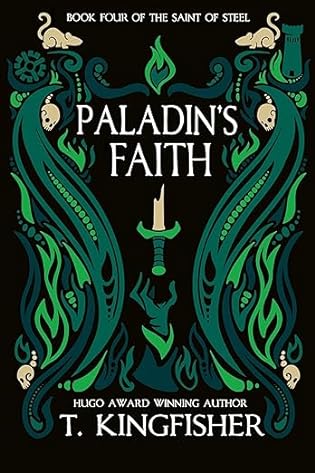 Paladin's Faith (The Saint of Steel, #4) by
Paladin's Faith (The Saint of Steel, #4) by 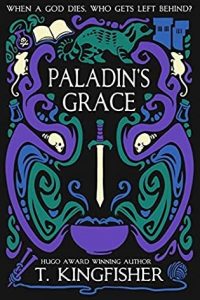 There’s a classic saying about large organizations at cross-purposes within themselves, that the right-hand doesn’t know what the left hand is doing. Marguerite Florian’s problem with the Red Sail mercantile empire is that their “right hand does not know who the left is killing”.
There’s a classic saying about large organizations at cross-purposes within themselves, that the right-hand doesn’t know what the left hand is doing. Marguerite Florian’s problem with the Red Sail mercantile empire is that their “right hand does not know who the left is killing”.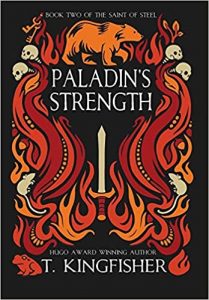 Marguerite just has to stay alive long enough to find the artificer. For that, she’ll need bodyguards who can’t be bribed or bought, seduced or suborned. She needs a paladin – or two.
Marguerite just has to stay alive long enough to find the artificer. For that, she’ll need bodyguards who can’t be bribed or bought, seduced or suborned. She needs a paladin – or two.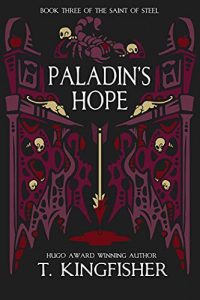 Howsomever, by the nature of that waiting game a LOT of this story is extremely interesting character development with a fair bit of adding to the depth of the worldbuilding but one does, like one of the side characters, Davith, want them to just ‘get on with it’ one way or another, either to get a move on in their mission or just make a move on each other.
Howsomever, by the nature of that waiting game a LOT of this story is extremely interesting character development with a fair bit of adding to the depth of the worldbuilding but one does, like one of the side characters, Davith, want them to just ‘get on with it’ one way or another, either to get a move on in their mission or just make a move on each other.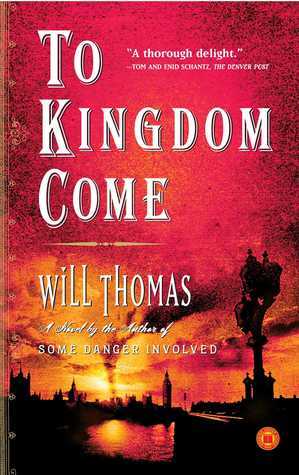 To Kingdom Come (Barker & Llewelyn, #2) by
To Kingdom Come (Barker & Llewelyn, #2) by 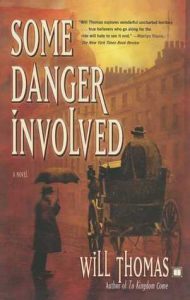 After the events of the first marvelous book in this series,
After the events of the first marvelous book in this series, 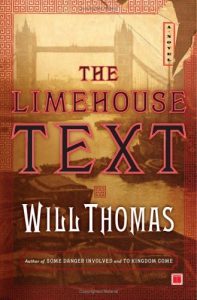 What kept me glued to my seat (as this turned out to be a one-sitting/one-evening read) was the way that it dove head-first both into the heart of its point-of-view character Thomas Llewelyn and into the hearts and motivations of the Irish Republican Brotherhood faction members, and the difficulty that Llewelyn had separating himself from them and his sympathy for their cause even as he decried their methods and worked to bring them down, doing his best to keep them all from being blown “to kingdom come”.
What kept me glued to my seat (as this turned out to be a one-sitting/one-evening read) was the way that it dove head-first both into the heart of its point-of-view character Thomas Llewelyn and into the hearts and motivations of the Irish Republican Brotherhood faction members, and the difficulty that Llewelyn had separating himself from them and his sympathy for their cause even as he decried their methods and worked to bring them down, doing his best to keep them all from being blown “to kingdom come”.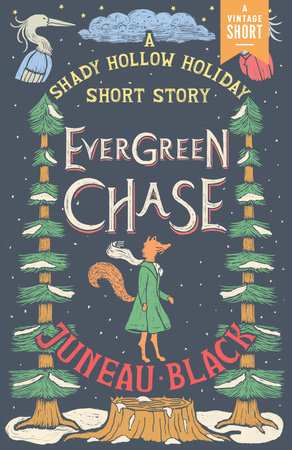 Evergreen Chase: A Shady Hollow Mystery Short Story by
Evergreen Chase: A Shady Hollow Mystery Short Story by 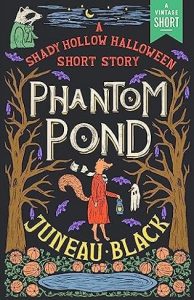 This is explicitly not a Christmas story, just as
This is explicitly not a Christmas story, just as  That the town pulls together to celebrate the solstice with or without the tree is all part of the series’ charm. That they have their own solstice miracle just adds to the sweetness of both the story and the holiday season – both theirs and ours.
That the town pulls together to celebrate the solstice with or without the tree is all part of the series’ charm. That they have their own solstice miracle just adds to the sweetness of both the story and the holiday season – both theirs and ours.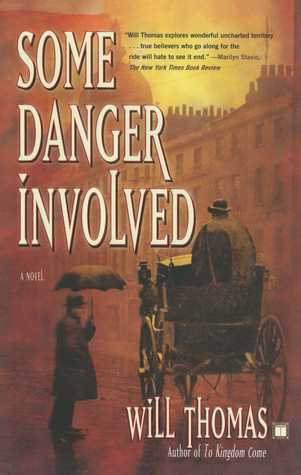 Some Danger Involved (Barker & Llewelyn, #1) by
Some Danger Involved (Barker & Llewelyn, #1) by  Murder at the Royal Botanic Gardens (Wrexford & Sloane, #5) by
Murder at the Royal Botanic Gardens (Wrexford & Sloane, #5) by 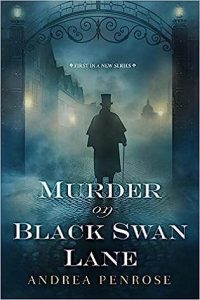 This fifth book in the
This fifth book in the  Before Charlotte can be truly happy, all of those swords hanging over her head have to be carefully taken down, while she and Wrexford are in the midst of solving a criminal conspiracy that turns out to have more heads than Hydra. That the sheer tangle of threats coming their way makes both of them realize just how many hostages to fortune they have gathered around themselves over the course of their investigations adds to Charlotte’s worry and angst.
Before Charlotte can be truly happy, all of those swords hanging over her head have to be carefully taken down, while she and Wrexford are in the midst of solving a criminal conspiracy that turns out to have more heads than Hydra. That the sheer tangle of threats coming their way makes both of them realize just how many hostages to fortune they have gathered around themselves over the course of their investigations adds to Charlotte’s worry and angst.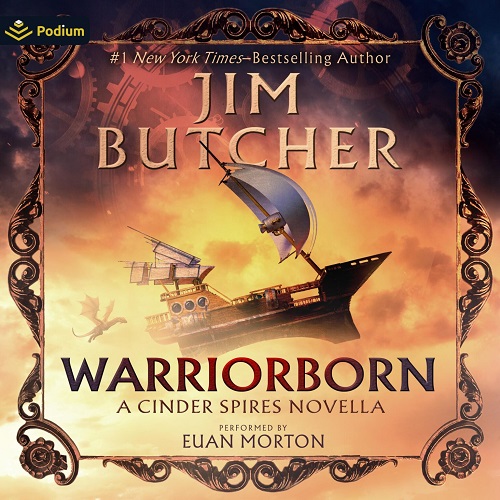 Warriorborn: A Cinder Spires Novella (The Cinder Spires) by
Warriorborn: A Cinder Spires Novella (The Cinder Spires) by  Warriorborn is the perfect method for readers who remember the first book in the
Warriorborn is the perfect method for readers who remember the first book in the 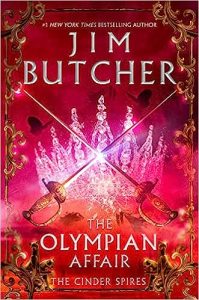 Escape Rating A-: I picked this up this week because I was having a “flail and bail” kind of day. Post Halloween, I was horror’ed out. Even at the horror-adjacency level I’m more comfortable in. I hit the “I can’t evens” and went looking for something a bit more comforting. This would not, I admit, normally have filled that bill, but the NetGalley app was having a flail of its own which is now fixed, but at the time was knocking me out of the book I’m listening to.
Escape Rating A-: I picked this up this week because I was having a “flail and bail” kind of day. Post Halloween, I was horror’ed out. Even at the horror-adjacency level I’m more comfortable in. I hit the “I can’t evens” and went looking for something a bit more comforting. This would not, I admit, normally have filled that bill, but the NetGalley app was having a flail of its own which is now fixed, but at the time was knocking me out of the book I’m listening to.